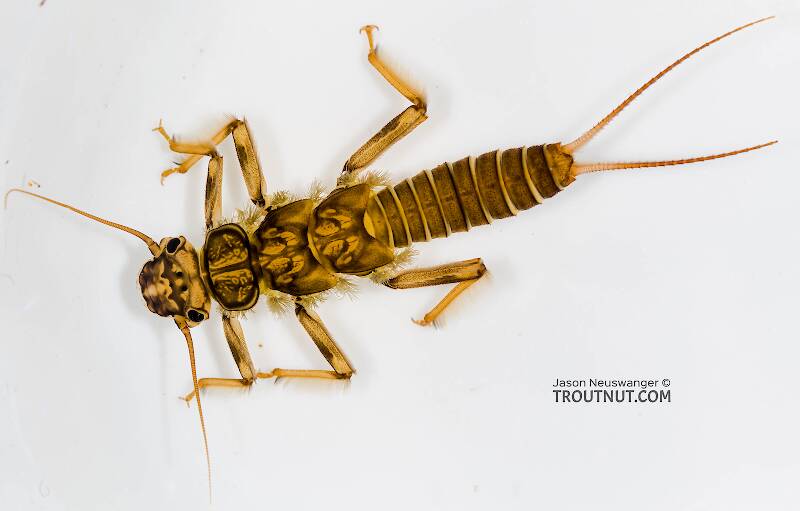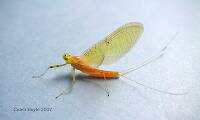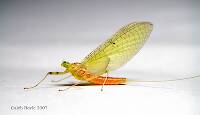
Blue-winged Olives
Baetis
Tiny Baetis mayflies are perhaps the most commonly encountered and imitated by anglers on all American trout streams due to their great abundance, widespread distribution, and trout-friendly emergence habits.
Featured on the forum

Troutnut is a project started in 2003 by salmonid ecologist Jason "Troutnut" Neuswanger to help anglers and
fly tyers unabashedly embrace the entomological side of the sport. Learn more about Troutnut or
support the project for an enhanced experience here.

This is a fairly small late-season female Stenacron dun.
Taxon on Aug 23, 2006August 23rd, 2006, 8:24 pm EDT
Looks to be Stenacron interpunctatum (Stenonema heterotarsale).
Troutnut on Aug 24, 2006August 24th, 2006, 4:29 am EDT
Thanks. I guess that's sort of the default guess.
Do you know any reference to rule out the other species of Stenacron? I'll have to check my papers more carefully but I don't think I've found a good one yet. You're probably right just based on distribution and abundance, but I've collected such a wide range of Stenacron specimens (all listed under interpunctatum on this site) that it's hard to believe they're all the same species.
Do you know any reference to rule out the other species of Stenacron? I'll have to check my papers more carefully but I don't think I've found a good one yet. You're probably right just based on distribution and abundance, but I've collected such a wide range of Stenacron specimens (all listed under interpunctatum on this site) that it's hard to believe they're all the same species.
Jason Neuswanger, Ph.D.
Troutnut and salmonid ecologist
Troutnut and salmonid ecologist
Taxon on Aug 24, 2006August 24th, 2006, 8:26 am EDT
Jason-
My guess is based on the striking similarity of your photo to the photo labeled "Stenonema heterotarsale, female dun" on Color Plate XI in Hatches II. The wing coloring, venation, and marking are about as close as I've ever seen.
My guess is based on the striking similarity of your photo to the photo labeled "Stenonema heterotarsale, female dun" on Color Plate XI in Hatches II. The wing coloring, venation, and marking are about as close as I've ever seen.
Wiflyfisher on Aug 24, 2006August 24th, 2006, 2:34 pm EDT
My guess is based on the striking similarity of your photo to the photo labeled "Stenonema heterotarsale, female dun" on Color Plate XI in Hatches II. The wing coloring, venation, and marking are about as close as I've ever seen.
In the past I have caught those same mayflies on the *********** River in NW WI. and came to the same conclusion using photos in Hatches.
John S.
https://WiFlyFisher.com
https://WiFlyFisher.com
Troutnut on Aug 24, 2006August 24th, 2006, 3:36 pm EDT
My main concern with the identification is that the differences between different Stenacron species may only be discernible in the male spinner forceps or nymph mouth parts or something. I'll try to find a better reference to the genus and figure iout.
Jason Neuswanger, Ph.D.
Troutnut and salmonid ecologist
Troutnut and salmonid ecologist
Taxon on Aug 24, 2006August 24th, 2006, 4:45 pm EDT
Jason-
Good point. Let me know what you find.
Good point. Let me know what you find.
Quick Reply
Related Discussions
Topic
Replies
Last Reply
4
May 24, 2008
by Softhackle
by Softhackle
Re: Here's two I could use some help with from East Tennessee! 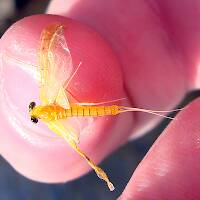
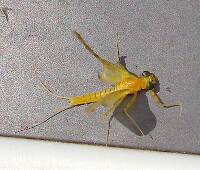
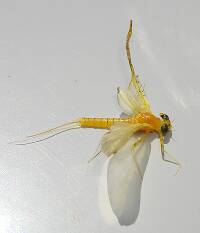
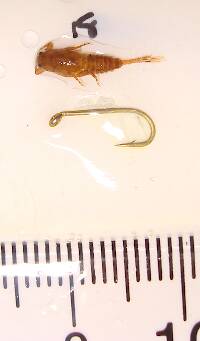
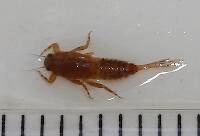
In the Identify This! Board by BrettHRomer
+ 1





In the Identify This! Board by BrettHRomer
6
May 8, 2008
by JOHNW
by JOHNW
Re: Last summer while fishing on the Henry's Fork in Idaho.....Is it Epeorus Pleuralis???
In the Identify This! Board by Byhaugh
In the Identify This! Board by Byhaugh
10
Jan 16, 2014
by Entoman
by Entoman


